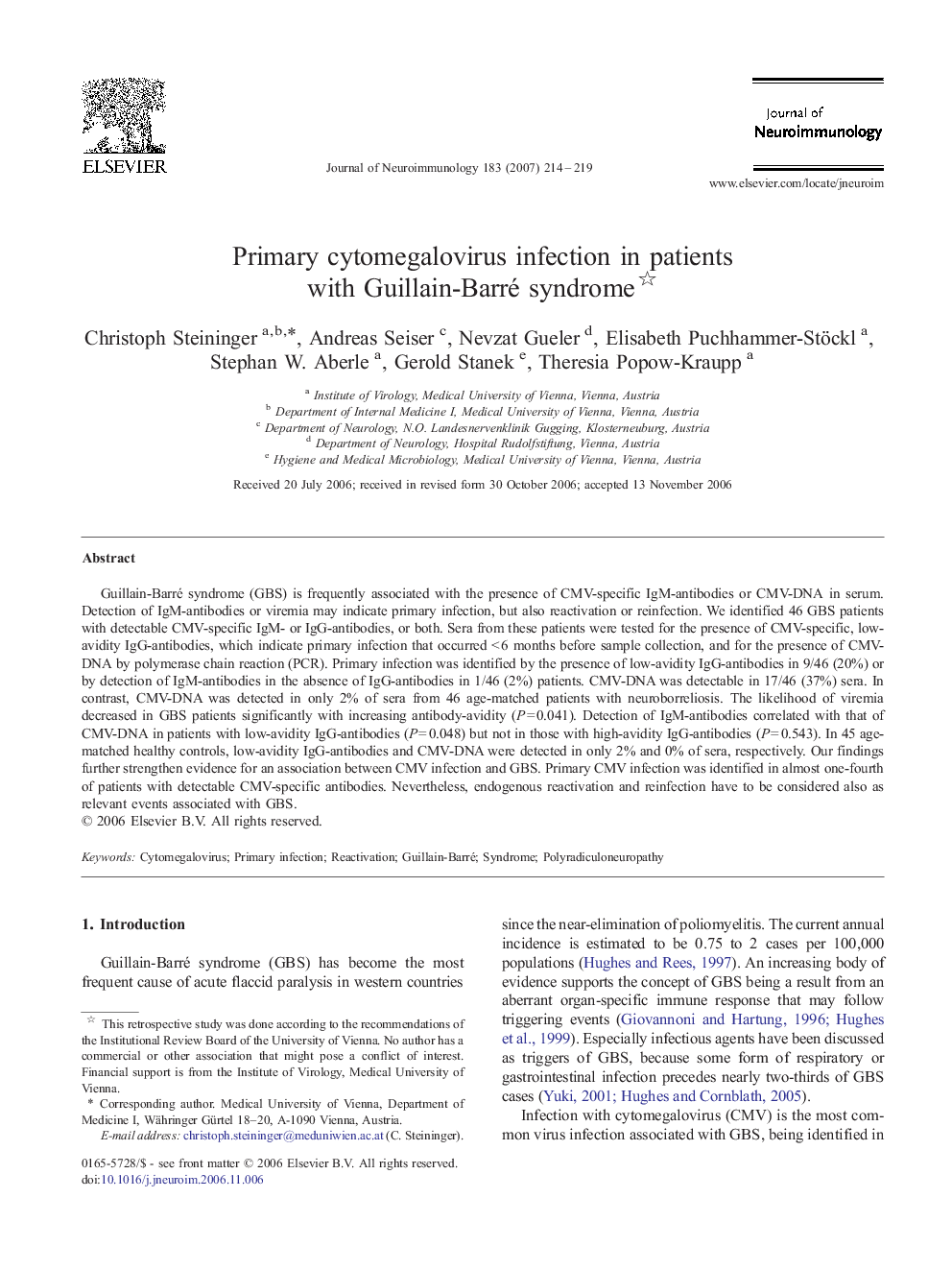| Article ID | Journal | Published Year | Pages | File Type |
|---|---|---|---|---|
| 3065823 | Journal of Neuroimmunology | 2007 | 6 Pages |
Guillain-Barré syndrome (GBS) is frequently associated with the presence of CMV-specific IgM-antibodies or CMV-DNA in serum. Detection of IgM-antibodies or viremia may indicate primary infection, but also reactivation or reinfection. We identified 46 GBS patients with detectable CMV-specific IgM- or IgG-antibodies, or both. Sera from these patients were tested for the presence of CMV-specific, low-avidity IgG-antibodies, which indicate primary infection that occurred < 6 months before sample collection, and for the presence of CMV-DNA by polymerase chain reaction (PCR). Primary infection was identified by the presence of low-avidity IgG-antibodies in 9/46 (20%) or by detection of IgM-antibodies in the absence of IgG-antibodies in 1/46 (2%) patients. CMV-DNA was detectable in 17/46 (37%) sera. In contrast, CMV-DNA was detected in only 2% of sera from 46 age-matched patients with neuroborreliosis. The likelihood of viremia decreased in GBS patients significantly with increasing antibody-avidity (P = 0.041). Detection of IgM-antibodies correlated with that of CMV-DNA in patients with low-avidity IgG-antibodies (P = 0.048) but not in those with high-avidity IgG-antibodies (P = 0.543). In 45 age-matched healthy controls, low-avidity IgG-antibodies and CMV-DNA were detected in only 2% and 0% of sera, respectively. Our findings further strengthen evidence for an association between CMV infection and GBS. Primary CMV infection was identified in almost one-fourth of patients with detectable CMV-specific antibodies. Nevertheless, endogenous reactivation and reinfection have to be considered also as relevant events associated with GBS.
